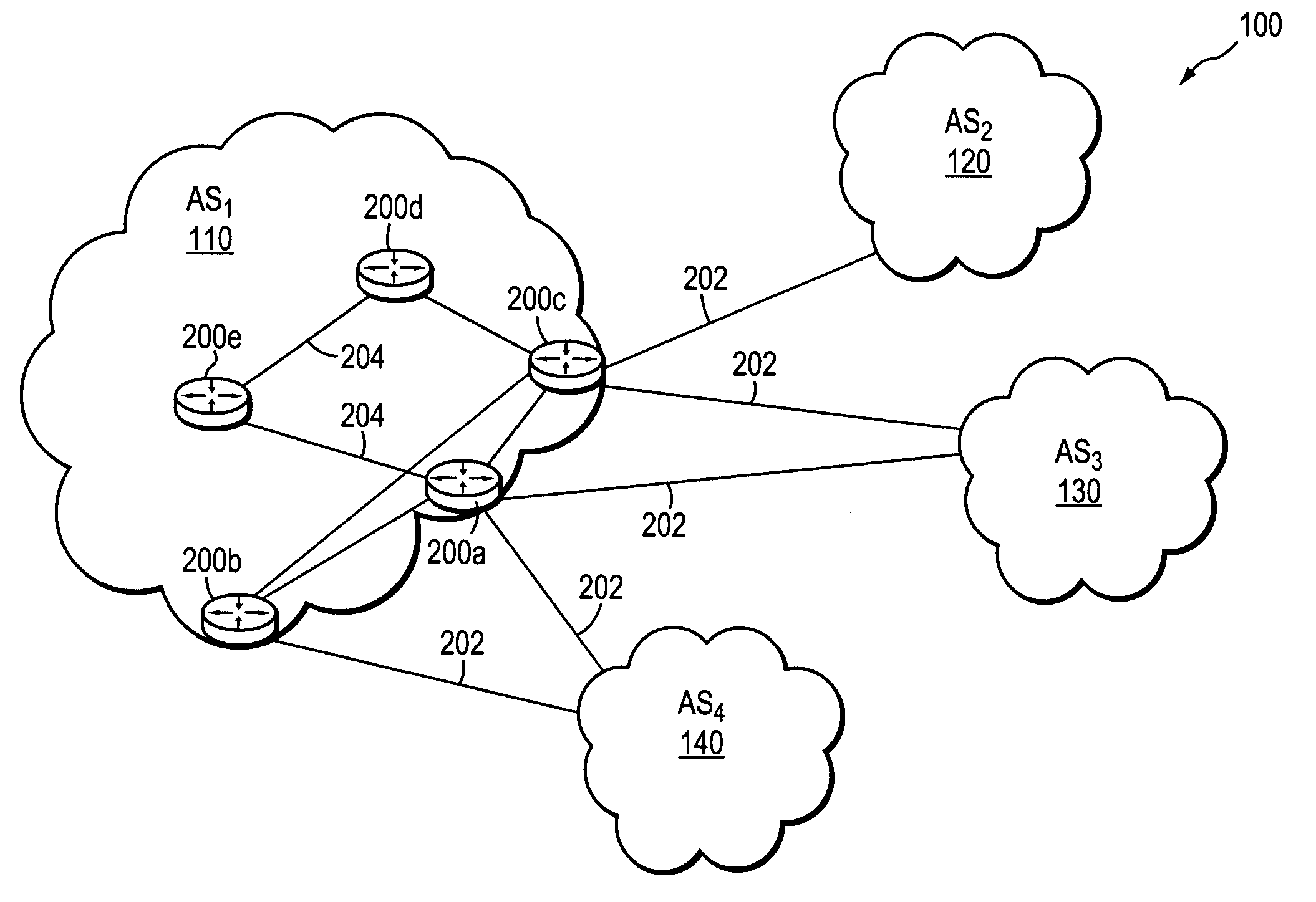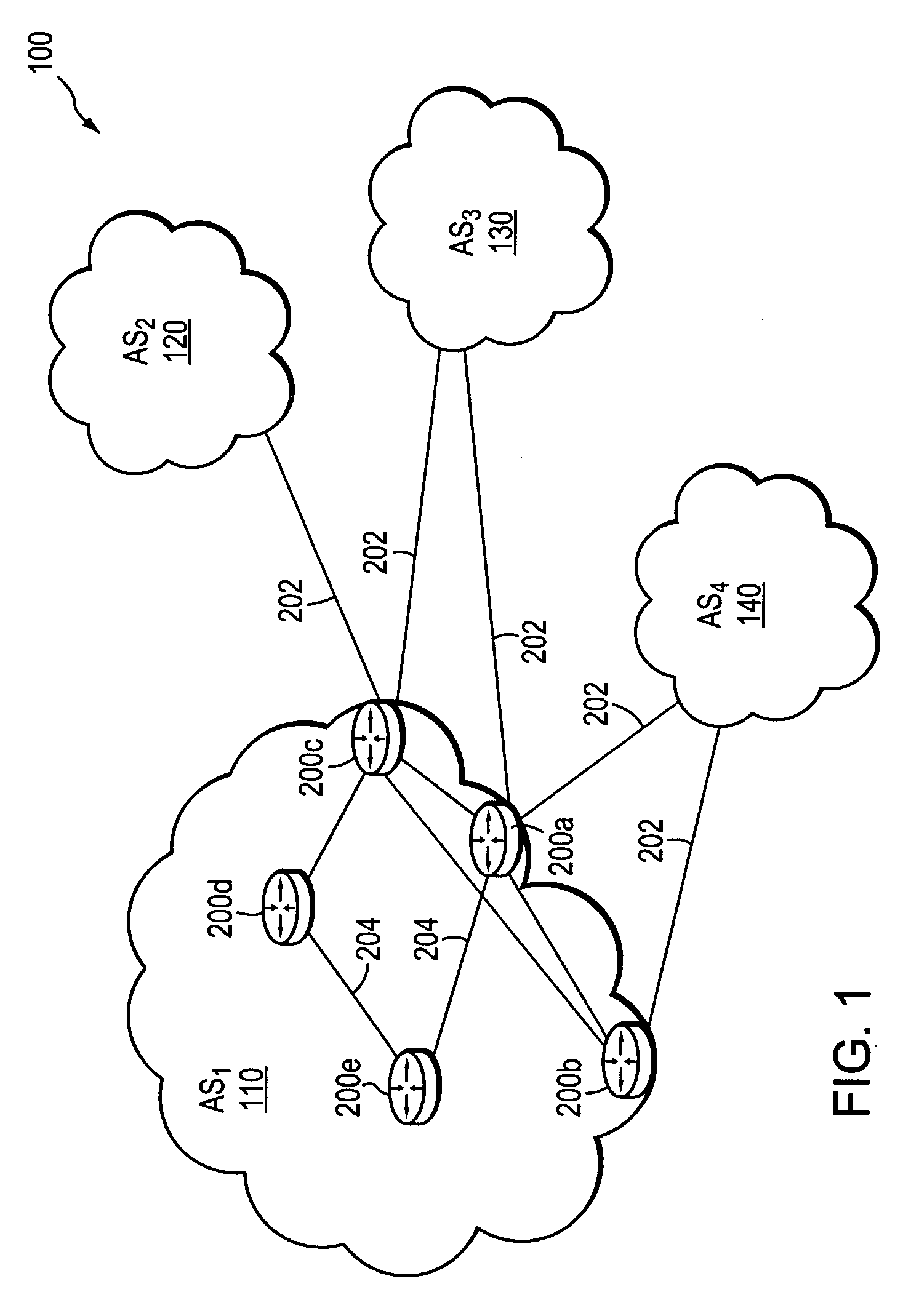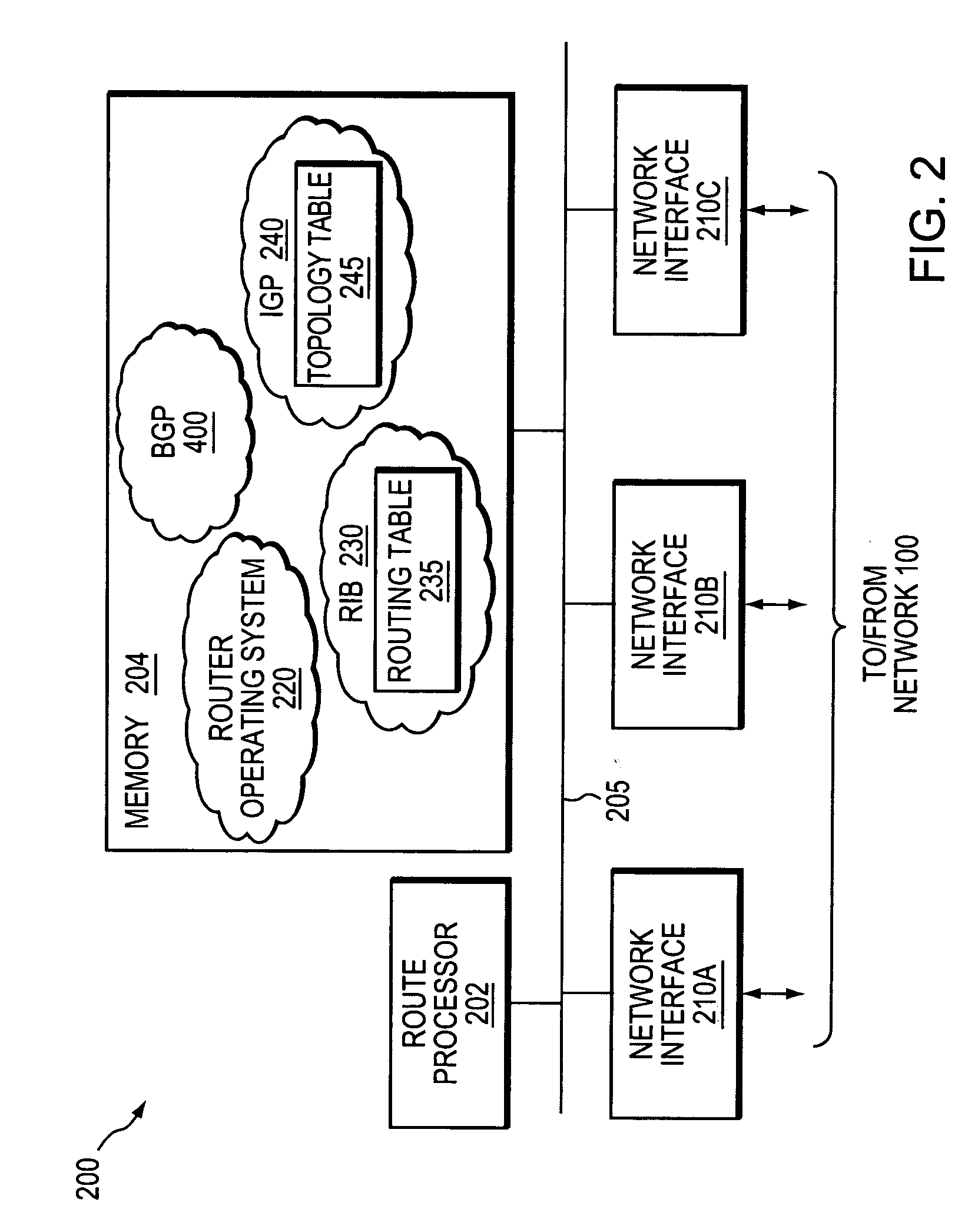Automatic route tagging of BGP next-hop routes in IGP
- Summary
- Abstract
- Description
- Claims
- Application Information
AI Technical Summary
Benefits of technology
Problems solved by technology
Method used
Image
Examples
Embodiment Construction
[0033]FIG. 1 is a schematic block diagram of a computer network 100 comprising a plurality of routing domains interconnected by intermediate network nodes. The intermediate network nodes may comprise switches but, in the illustrative embodiment, are routers 200. The routing domains or autonomous systems (AS1-4) are illustratively interconnected by border routers 200a-c via point-to-point communication links 202, such as frame relay links, asynchronous transfer mode links or other serial links. The border routers 200a-c of AS 110 (AS1) are illustratively coupled to routers 200d-e via subnetworks, such as local area networks 204. Communication among the routers 200 is typically effected by exchanging discrete data packets or messages in accordance with predefined protocols, such as the Transmission Control Protocol / Internet Protocol (TCP / IP). It will be understood to those skilled in the art that other protocols, such as the Internet Packet Exchange (IPX) protocol, may be advantageous...
PUM
 Login to View More
Login to View More Abstract
Description
Claims
Application Information
 Login to View More
Login to View More - R&D
- Intellectual Property
- Life Sciences
- Materials
- Tech Scout
- Unparalleled Data Quality
- Higher Quality Content
- 60% Fewer Hallucinations
Browse by: Latest US Patents, China's latest patents, Technical Efficacy Thesaurus, Application Domain, Technology Topic, Popular Technical Reports.
© 2025 PatSnap. All rights reserved.Legal|Privacy policy|Modern Slavery Act Transparency Statement|Sitemap|About US| Contact US: help@patsnap.com



